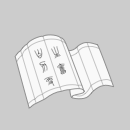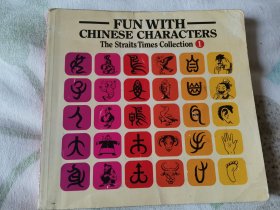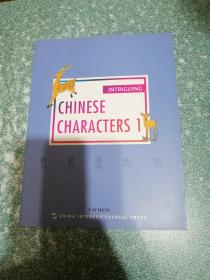
有趣的汉字(1) 9787508535418
正版图书,可开发票,请放心购买。
¥ 34.9 5.0折 ¥ 69.8 全新
库存2件
广东广州
认证卖家担保交易快速发货售后保障
作者苗耀华
出版社五洲传播出版社
ISBN9787508535418
出版时间2017-06
装帧平装
开本16开
定价69.8元
货号25146884
上书时间2024-10-19
- 最新上架
商品详情
- 品相描述:全新
- 商品描述
-
前言
The objective of this series is to provide a link between Chinese language and culture, so that learners will not only know the meanings of the characters, or the common phrases in which they appear, but also the cultural context of the characters. It is hoped that the series will motivate learners to take a keen interest in this language.
This series contains the most common 128 Chinese characters that will help both interested students and foreign learners to understand the Chinese language and mind. Although they are all ‘radicals’ 部首, the term has been deliberately avoided because it is rather technical. Instead, the term ‘component’ 偏旁 has been chosen in its place.
Most of the 128 characters can be used on their own to form phrases. A small number of them can only be used in word formation and almost never on their own.
The ancient characters are largely pictograms 象形, or picturewords, and are listed according to their simplified form 简体 in this series. The evolution of these characters can be seen through their different scripts over more than 3,000 years, namely 甲 (骨文) (oracle-bone script, the earliest known Chinese writing), 金 (文) (bronze script), 篆 (体) (seal script), 隶 (书) (official script in the Han dynasty), and modern-day regular script 楷 (书). The oracle-bone and bronze scripts invariably explain the original meanings of the Chinese characters concerned. Occasionally, it is necessary to mention the conventional characters 繁体 for elaboration.
The panels in each unit explain the word origin, the phrases in which the character appears, its use as a component in word formation and, where applicable, its cultural significance.
导语摘要
文化在语言发展历程中通常扮演了非常重要的角色,对于中文尤其如此。了解文化内涵会让汉字学习变得轻松而愉快。“趣读中国文化”系列之“有趣的汉字”一共包括4本书,专门为非中文母语环境下的读者定制,作者凭借多年积累的经验,选择了目标读者比较容易接受的一些常用汉字,配以丰富插图或照片。为方便读者使用,内容编排按照英文字母顺序。In language development, culture has often played an important part, which holds especially true for Chinese language. Knowing the cultural context would make learning Chinese language easier and more fun. Intriguing Chinese Characters presents some common Chinese characters and their cultural context through cartoons and photos. The series includes 4 books with Chinese character subjects arranged in English alphabetic order.
作者简介
Mew Yew Hwa是前新加坡大学毕业生,主修汉学与历史。毕业后一直从事教育出版行业,积累了几十年的经验,对英语和汉语作为第二语言的学习方法有深入研究,并在实践中总结出一些行之有效的方法,近几年从编辑转为作者,著述丰富。Y H Mew, MA (History), has spent over 30 years publishing language-related books for young and adult learners. He is constantly seeking creative ways to present content so that readers may find learning more enjoyable.
目录
ContentsPreface 31 八 bä (2 strokes) 62 白 bái (5 strokes) 83 宀 (3 strokes) 104 冖 (2 strokes) 115 贝 bèi (4 strokes) 126 疒 (5 strokes) 137 比 bî (4 strokes) 148 卜 bû (2 strokes) 169 艹 (3 strokes) 1810 长 cháng/zhâng (4 strokes) 1911 厂 châng (2 strokes) 2212 车 chë (4 strokes) 2413 虫 chóng (6 strokes) 2614 寸 cùn (3 strokes) 2815 大 dà (3 strokes) 3016 歹 dâi (4 strokes) 3217 刀 däo (2 strokes) 3418 豆 dòu (7 strokes) 3619 儿 ér (2 strokes) 3820 耳 êr (6 strokes) 4021 方 fäng (4 strokes) 4322 非 fëi (8 strokes) 4623 父 fù (4 strokes) 4824 阜 fù (left 阝) (8 strokes) 5025 邑 yì (right 阝) (7 strokes) 5126 卩 (2 strokes) 5227 攴 (攵) (4 strokes) 5328 干 gän (3 strokes) 5429 甘 gän (5 strokes) 5630 高 gäo (10 strokes) 5831 戈 gë (4 strokes) 6032 革 gé (9 strokes) 6233 弓 göng (3 strokes) 6434 工 göng (3 strokes) 6635 谷 gû (7 strokes) 6836 骨 gû (9 strokes) 7037 广 guâng (3 strokes) 7238 鬼 guî (9 strokes) 7439 禾 hé (5 strokes) 7640 黑 hëi (12 strokes) 7841 虍 (6 strokes) 8042 户 hù (4 strokes) 8243 火 huô (4 strokes) 8444 己 jî (3 strokes) 8645 见 jiàn (4 strokes) 8846 巾 jïn (3 strokes) 9047 金 jïn (8 strokes) 9248 斤 jïn (4 strokes) 9449 口 kôu (3 strokes) 9650 囗 (3 strokes) 9951 老 lâo (6 strokes) 10052 力 lì (2 strokes) 10353 立 lì (5 strokes) 10654 龙 lóng (5 strokes) 10855 鹿 lù (11 strokes) 11056 马 mâ (3 strokes) 11257 毛 máo (4 strokes) 11458 门 mén (3 strokes) 11659 米 mî (6 strokes) 11860 面 miàn (9 strokes) 12061 皿 mîn (5 strokes) 12262 廴 (2 strokes) 12363 母 mû (5 strokes) 12464 木 mù (4 strokes) 126
内容摘要
文化在语言发展历程中通常扮演了非常重要的角色,对于中文尤其如此。了解文化内涵会让汉字学习变得轻松而愉快。“趣读中国文化”系列之“有趣的汉字”一共包括4本书,专门为非中文母语环境下的读者定制,作者凭借多年积累的经验,选择了目标读者比较容易接受的一些常用汉字,配以丰富插图或照片。为方便读者使用,内容编排按照英文字母顺序。In language development, culture has often played an important part, which holds especially true for Chinese language. Knowing the cultural context would make learning Chinese language easier and more fun. Intriguing Chinese Characters presents some common Chinese characters and their cultural context through cartoons and photos. The series includes 4 books with Chinese character subjects arranged in English alphabetic order.
主编推荐
Mew Yew Hwa是前新加坡大学毕业生,主修汉学与历史。毕业后一直从事教育出版行业,积累了几十年的经验,对英语和汉语作为第二语言的学习方法有深入研究,并在实践中总结出一些行之有效的方法,近几年从编辑转为作者,著述丰富。Y H Mew, MA (History), has spent over 30 years publishing language-related books for young and adult learners. He is constantly seeking creative ways to present content so that readers may find learning more enjoyable.
精彩内容
谷 gû (7 strokes)甲 金 篆 隶 楷The word 谷 means ‘valley’. Its ancient character has two parts. The top part depicts half of the character for 水 (shuî, ‘water’) and represents water fl owing from a mountain stream. The bottom part 口 (kôu, ‘mouth’) represents the opening of a valley leading to a plain.The word 谷 can be used in phrases, for example 谷底 (gû dî, ‘the bottom of the valley’), 山谷 (shän gû, ‘mountain valley’) and 大峡谷 (dà xiá gû, ‘the Grand Canyon’).谷 can also be used as a component in word formation, as in 欲(yù, ‘wish’, ‘desire’) and 豁(huò, ‘open’). The word 谷 is also the simplified form of the conventional character 穀, meaning ‘cereal’, for example 五谷 (wû gû, ‘the fi ve cereals’) and 谷物 (gû wù, ‘grain’).Idioms and phrases谷地 gû dìvalley谷类 gû lèicereal谷子 gû zimillet河谷 hé gûriver valleyTry it!
相关推荐
— 没有更多了 —



























以下为对购买帮助不大的评价